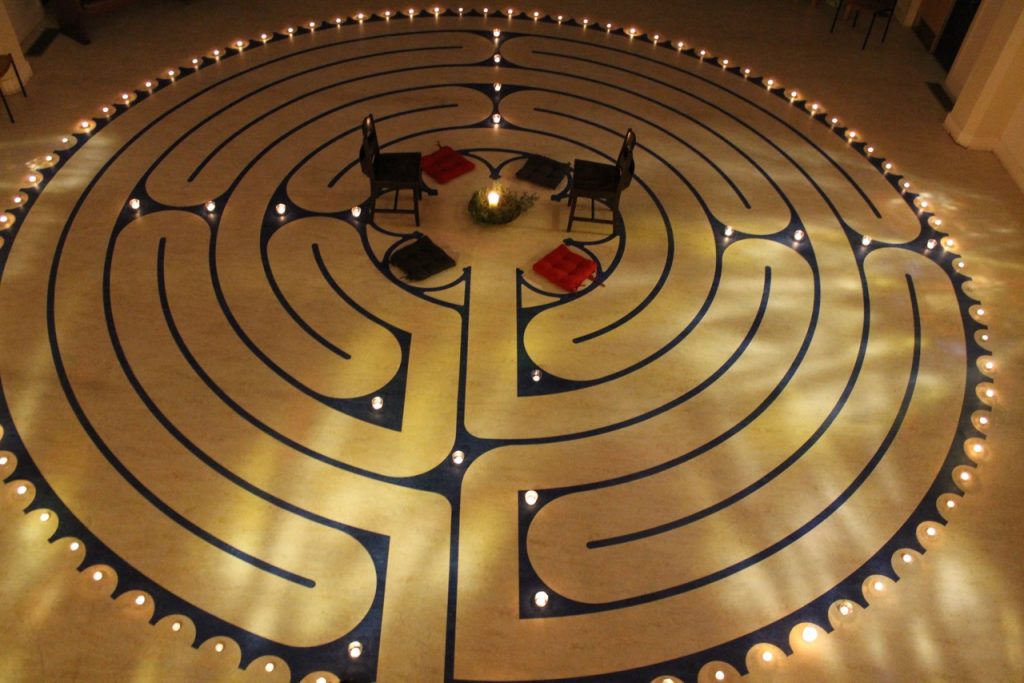Labyrinth trend has parishioners on new path to prayer
By Kiera Kowalski
Parish members at Centretown churches are incorporating a creative form of prayer into their services.
St. Luke’s Anglican Church and Christ Church Cathedral are using labyrinths, a form of prayer focused on meditation and well-being.
“In a nutshell, a labyrinth is an ancient geometric pattern found all over the world,” said Susan Kehoe, who facilitates labyrinth walks every month at St. Luke’s on Somerset Street in Chinatown.
The latest walk was held on Dec. 1, with the theme “rejoice” offered to guide the participants in their quiet reflections.
“We have a seven-circuit labyrinth, meaning there are seven paths right into the centre,” she added, motioning to the thick, swirling lines painted on the cathedral floor.
“There are no dead ends,” she noted. “If you walk in you’ll eventually get to the centre and you’ll walk back out.”
It is not a typical form of prayer. The room is completely silent while people are doing the walk through the labyrinth, and the activity is not facilitated by a priest.
Kehoe described it as a self-reflective journey.
“I think it has come back in the last 30 years to help us pause, stop, reflect and meditate,” she said. “It takes us out of our head and into our bodies.”
St. Luke’s has had the labyrinth for five years. During renovations, the clergy decided to remove all of the pews and create the labyrinth on the cathedral floor.
Now, during regular church services, chairs are brought in, but otherwise the labyrinth remains the centre of attention on the church floor.
Every first Friday of the month, Kehoe and labyrinth guide Debbie Camelin, who make up the group Path Adventures, hold a walk at St. Luke’s.
They dim the lights of the church and light 128 tiny candles. When the candles are placed on the labyrinth it glows, radiating light and becoming the true centre of the church.
Camelin noted that not just churches are bringing labyrinths into their spaces. The meditative practice is also used in prisons and health care facilities.
They are also used in equine therapy with horses and people often draw them on beaches to meditate and become closer to nature.
She noted that in the summers she has a labyrinth in her garden that she uses for positive reflection and meditation.
Christ Church Cathedral on Sparks Street also uses labyrinths in its services.
Barbara Brown, a facilitator at the church, described the contemplative pathway as creativity at its best.

